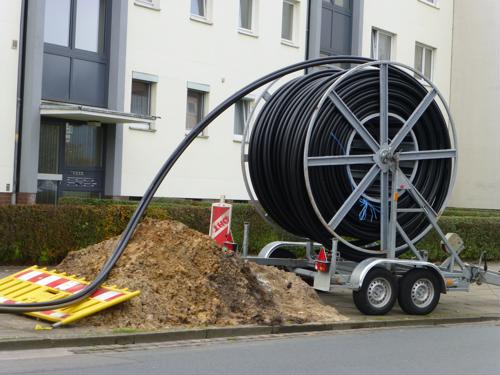
3 factors driving the growing FTTH market
By Donna DonnowitzApril 26, 2016
Fiber-to-the-home investments are rising as telecoms work to ramp up their service options in light of changing customer demands. At its simplest, an FTTH system dramatically improves performance by not only offering key fiber links to improve bandwidth within the network, but also by providing a direct fiber connection for homes and commercial sites, making it much easier to maintain high levels of performance for end users.
A recent study from Future Market Insights predicted that the global FTTH market will rise at a healthy compound annual growth rate from the period of 2015 to 2025. During that period, a variety of industry conditions will drive market expansion. Three of the most noteworthy conditions contributing to FTTH's momentum are:
1. Entertainment
The study pointed to shifting entertainment demands, particularly in terms of connected home systems and the consumption online apps, music and books. These technological services are changing the consumer sector as households turn to diverse online resources to find their entertainment.
"FTTH eliminates performance bottlenecks by getting a dedicated fiber line to every home."
Video streaming, online gaming and similar trends add another layer of challenges to online entertainment delivery, something that is further complicated by people accessing resources through multiple devices. All of these factors compound to create staggering bandwidth challenges in households. Throw in a move toward 4K resolutions for video, and you have a huge bandwidth usage spike on the horizon.
A fiber-to-the-node system can help with these problems, but the methodology still depends on aggregating huge amounts of data from multiple houses over a copper network before getting information back to the node. As such, a few subscribers on the same telecom network in a neighborhood can quickly overwhelm the network, leading to performance problems for everybody else signed up for the service. FTTH eliminates these types of performance bottlenecks by getting a dedicated fiber line to every home.
2. Cloud computing
While FTTH specifically refers to home, it is also worth noting that fiber to the premises, often referred to as FFTx, is often looked at as part of this market. Businesses and consumers alike are experiencing a wave of cloud apps and services being developed to solve longstanding technology problems. According to the study, the cloud is a major cause of increased fiber investments.
Cloud computing is a somewhat unique technology in that it depends incredibly heavily on the Internet for data delivery. In the past, a person accessing software would almost always get to it through either the hard drive in the computer being used or the corporate data center. Now, people are accessing apps and services through the cloud, bringing more data through the Internet. As consumers and business users alike pursue cloud computing for data-rich functions - ranging from entertainment apps to solutions for large-scale file sharing - telecom networks face the brunt of the burden.
FTTH investments empower telecoms to keep up with the demands created by the cloud and ensure their solutions meet changing customer demands.
"Public services are transforming around high-bandwidth networks."
3. Public services
The study identified smart grids, e-health solutions and e-governance systems as other major contributors to FTTH investments moving forward. These trends all involve moving large quantities of data to diverse locations, putting considerable stress on copper-based telecom systems.
These public services are transforming around high-bandwidth networks. Smart grids are allowing for robust communication between grid components, letting utility operators offer more precise and reliable power delivery. E-health is making medicine more accessible as doctors can receive x-rays, MRIs and similar materials electronically and meet with patients over a video stream. This allows individuals to interact with specialists hours away from their respective homes, making the best care available to people on a smaller budget. E-governance follows in this theme, allowing government bodies to improve inter-agency agility while also expanding the services it offers constituents.
All told, these trends showcase a world that is transitioning to Internet-based services, something that makes telecom network transformation essential.
Simplifying FTTH deployment
The rapid evolution of emerging technologies is making FTTH infrastructure more important than ever, and telecoms that want to maintain a competitive advantage must deploy fiber-optic cabling systems quickly and efficiently. Fiber-to-Ethernet media converters are at the center of this process. Media conversion is necessary to get fiber infrastructure to interact with copper network components in homes and commercial locations, creating a potential cost and performance barrier. High-quality media converters can streamline network deployment by resolving compatibility issues in a cost-efficient way.
Perle has an extensive range of Managed and Unmanaged Fiber Media Converters to extended copper-based Ethernet equipment over a fiber optic link, multimode to multimode and multimode to single mode fiber up to 160km.



